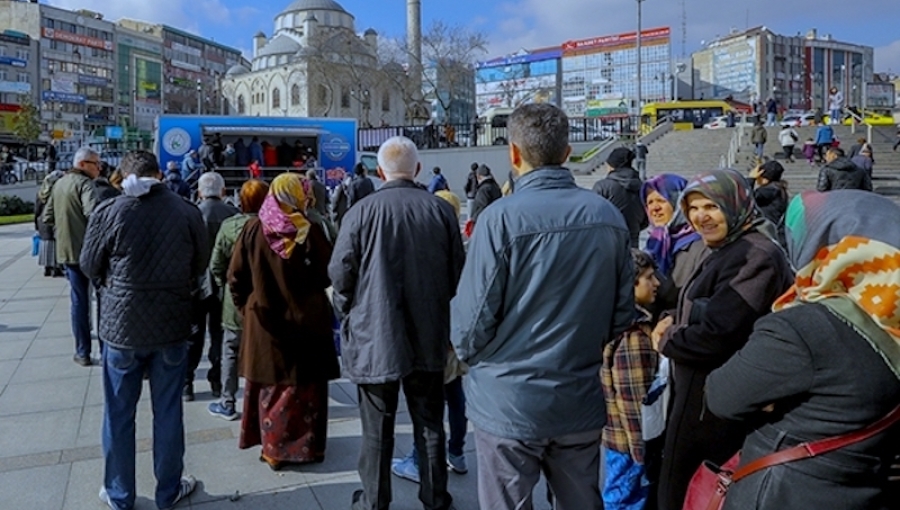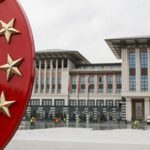In the absence of a policy rate cut, the Turkish lira (TRY) may well strengthen through 5.0 to the USD in the near term, Charles Robertson of London-based Renaissance Capital said on February 8 in an emailed note to investors entitled “Turkey: 2020+ uncertain, 2019 looks good”.
The TRY is cheap by 18%, according to Renaissance’s real effective exchange rate (REER) model.
“Next year is unpredictable,” but for now Renaissance thinks macro trends are underpinning its Turkey equity and local bonds overweight call.
Emerging and frontier markets investment bank Renaissance also sees the rally on Turkish markets as justified by the bold 625-bp policy rate hike back in September and predicts it has much further to go. Its base case that Turkey will have a Brazil-style crash-and-recovery is panning out well, according to Robertson.
“This implies a lot of upside in the equity market over two years (even with multiple equity-market falls of at least 10%) and sustained deleveraging in the economy with bank lending shrinking until at least 2021. One near-term market fall could come as early as March, if we see a global reflation trade led by China pushing up commodity prices sharply,” Robertson said.
If the oil price is flat, Renaissance thinks Turkey’s 12-month current account deficit will shrink from nearly $60bn in May 2018 to $1bn in July. Net portfolio outflows of $1bn in the 12 months to October 2018 could become inflows of $10bn in 2019, and F DI might remain at around $7-8bn. This huge swing means Turkey will need to either: 1) pay off a lot of external debt; 2) see FX reserves rise sharply; or 3) allow the TRY to appreciate significantly.
“To keep the currency this competitive, the Central Bank of Turkey (CBT) might need to cut interest rates as early as March. We think this could be justified by 4Q18 GDP printing -6% YoY against consensus expectations of around -2%. But we are arguing internally about that rate-cut possibility,” said Robertson. The decision on whether the path is there to justify a rate cut will come on March 6, prior to the March 31 local elections.
A sluggish few years
Renaissance suspects Turkey—currently most preoccupied with rampaging food inflation that has set in since last summer’s currency crisis—will have a sluggish few years of growth but good markets in 2019, while it assumes many hidden debts will emerge in coming years to prevent a faster recovery.
“There is a very real risk-case scenario that Turkey tries to jump-start another boom-bust cycle. Perhaps [?] funding for new bank lending growth in 2020 and beyond could be found from China or the Gulf [?], but given the still-high loan/deposit ratios (117%), and a government balance sheet that we assume will prove to be much worse in a few years, we think the 5-6% growth boom would be short-lived and end very badly,” Robertson warned.
Tim Ash, London-based senior emerging markets sovereign strategist of BlueBay Asset Management, has also been weighing up where embattled Turkey is at.
In a commentary sent to investors on February 2, entitled “Turkey—sins of the past limit room for policy error”, he said: “The extent of the current account turnaround, and the maintenance of tight monetary policy from the CBT is helping to anchor the lira, which has rallied back from over 7 to the dollar at its weak point last year to now approaching 5—still looking cheap on REER, BEER and even FEER models.”
“[The central bank’s] hawkish stance was evident again [on January 30] in the presentation of the quarterly inflation report and suggests now that no rate cut will be instigated at the next MPC meeting on March 6, and indeed not for some time yet,” Ash added.
It’s even possible now to imagine the current account moving from a deficit of 6% of GDP in mid-2018 to around flat in mid-2019, assuming current trends sustain, Ash said, adding: “This is a remarkable turnaround and also suggests the economy is in recession.”
In recent months the inflation figures of the Turkish statistics agency TUIK have tended to surprise on the downside. Ash’s sense here is that growth, inflation and the current account deficits will all surprise on the downside this year as a reflection of the extent of the recessionary conditions.
“The danger is the market will react extremely negatively to any premature policy rate easing with the lira de-anchoring quickly and again going back into a devaluation death crash. In effect the CBT now has to rebuild its credibility by maintaining a hawkish policy stance for longer than perhaps the underlying data might suggest. The price here will be a deeper recession—more likely L-shaped—as the continued price of policy failures in 2018. But eventually, likely in the second half of 2019, there should be scope for the CBT to cut, assuming the lira remains relatively well anchored,” Ash said.
“You love it, or hate it”
Ash also observed: “Turkey is always an interesting credit to cover—and usually everyone has a strong view, you either love the story or hate it. Typically people are very polarised, both domestically with the AKP [President Recep Tayyip Erdogan’s Justice and Development Party] versus the secular crowd, and now also in the market, especially after the year we just had where the assured Turkish policy management which I guess we had grown accustomed to over the period 2002 to 2011/13 seemed to go AWOL in 2018.”
“Most people are now as a result [of the previous monetary policy errors] talking about an L-shaped recovery rather than the almost perennial V-shaped recovery which we had grown accustomed to over the past 17 years of AKP rule,” Ash added.
“Rather than repeating the kitchen sink approach as per the 2000/01 response [to problems in the banking sector] there seems to be too much greater use of forbearance in dealing with NPLs and questions over capital adequacy. This gives an impression that problems in the banking sector are being swept under the carpet, but that official NPL ratios don’t bear enough of a reflection of reality. The strategy in the banking sector seems to be to buy time, and hope that real GDP growth comes back quickly and that the banking sector can grow out of its problems again,” Ash warned.
Buying time? Main policy since 2013
In many critics’ eyes, Erdogan’s main policy since 2013 has been to buy time at high costs.
Global market forces are of course one thing it can become impossible to buy time against. In this respect, Ash noted: “And given the fragile state of the Turkish economy, emerging from the 2018 crisis, [Trump’s Twitter] threats [to devastate the Turkish economy in retaliation for clashes on Syria policy] seemed serious—serious in that the US had the ability to wreak havoc with the Turkish economy, the real question being would they actually want to do that, given that Turkey remains an ally (at least on paper) of the US. My own assumption is no, but Trump is difficult to read at the best of times,” said Ash.
A latest problem between Trump and Erdogan is the latter’s support for Venezuelan leader Nicolas Maduro and buying of Venezuela’s gold partly paid for with consumer goods to help sustain its basket case economy.
Ash also concluded that the Turkish government’s IMF-defined budget deficit might be larger than the official deficit while, at the same time, he boldly assumed that the Treasury has managed to reduce its overall financing needs, cutting domestic debt issuance, reducing the domestic debt rollover ratio and hence at least helping to anchor local debt markets.
“Despite lots of concern in the market about a pre-local election public spending spree, fiscal easing has been muted—there have been much heralded schemes to support specific borrowers, but the size of these programmes has been modest,” Ash said, offering some praise for the Erdogan administration’s tight fiscal policy stance.
Ash also determined that “most people would accept that with a public-sector debt to GDP ratio less than 35%, Turkey still has fiscal space to loosen in response now to an economy in recession”.
Other observers might wryly point out that it is only when undisclosed guaranteed payments to mega PPP projects and a possible need for a private sector bailout and also the possible impact of a renewed currency shock amid a new bet on FX borrowing are all ignored that Turkey’s official public debt figures can be portrayed as really promising and as providing the space for fiscal easing.
Albayrak “listened”
“Some credit for this orthodox policy response has to be given to [Turkish finance minister and Erdogan’s son-in-law Berat] Albayrak. While getting off to a poor/slow start last June [when he was appointed] to August, since September he seems to have listened to business, investors and bankers, and made the right policy choices to stabilise Turkish markets. He has also hired a solid team around him at the Treasury and worked to support a more orthodox policy impulse from the CBT. He appears to have listened, learned and implemented a reasonable set of policy responses that have done much to stabilise markets,” Ash added.
There is a danger here, however, of blithely taking the line of local “professional optimists” in praising Albayrak’s family connection to Erdogan—something which was initially met with much scepticism on the market—for furnishing him with the support needed at the very top for the roll out of “his” very own anti-crisis programme.
“Albayrak seems to have been given a full mandate to implement policy—which in recent years was held back from some of his predecessors. And it is encouraging that some of the wackier policy prescriptions coming from some of the president’s advisers seem to have been reined in—little has been heard of the interest rate lobby mantra in recent months. This is encouraging,” Ash added.
But Albayrak’s full mandate has, in matter of fact, proven limited. Note how he was knocked back when trying to buy in advisory services from blue-blooded US-based consultants McKinsey while he had better not dare go anywhere near Erdogan’s bete noire, the IMF.
However, Ash has it right in that Erdogan is not tilting at global economic windmills anymore since he learnt that global liquidity, which fuelled rising authoritarianism in the Third World following the 2008 global crisis, is drying up.
Yet, amid the rampant and rather pesky food inflation, his collection of enemies is expanding to include supermarket managers, vegetable wholesale brokers and even those who complain about vegetable prices. Albayrak & Erdogan’s plan to open a network of state-controlled fruit and veg stalls across municipalities begins in earnest this week. The control is very much directed at the prices as the executive presidency attempts to make good on promises to shield ordinary Turks from what it claims are speculators up to no good. Perish the thought that the price surges might simply be the free market at work amid an economy gone wrong!
Source: Inttelli News



